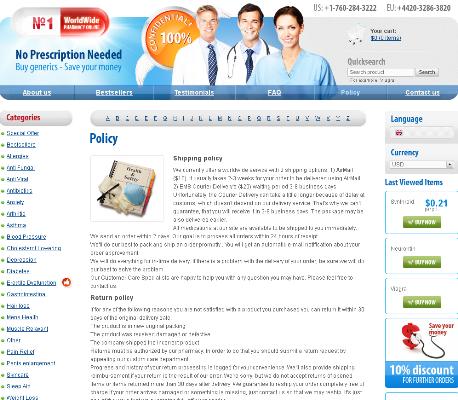Monitoring Electrolytes during Furosemide Therapy
Recognizing Early Signs of Electrolyte Imbalance
On the ward, a patient mentions muscle cramps and feels dizzy while standing; these subtle cues often precede lab abnormalities. Clinicians should often listen: weakness, palpitations, confusion, thirst, and decreased urine output are red flags that prompt electrolyte testing and timely action to prevent complications.
In clinic practice, repeat checks of electrolytes are guided by symptoms and diuretic dose. Occassionally patients report leg cramps or nocturnal arrhythmia; a focused exam and simple ECG help correlate symptoms with values. Consider medication review, fluid status, and enviroment factors to tailor monitoring frequency.
| Sign | Common Symptoms |
|---|---|
| Low K+ | Muscle cramps, palpitations |
| Low Na+ | Confusion, seizures |
Essential Blood Tests and Monitoring Frequency Guidelines

When starting furosemide, obtain baseline labs: sodium, potassium, magnesium, calcium, BUN, creatinine, plus ECG and urine output. That snapshot defines risk and initial monitoring intensity.
Recheck electrolytes and creatinine within 3 to 7 days after starting or changing dose, then every 1 to 3 months once stable; increase frequency for symptoms, higher doses, or reduced renal function.
High-risk patients — elderly, heart failure, or those on RAAS blockers — need closer surveillance and documentation. Teach patients to report weakness, palpitations, or dizziness promptly; this partnership makes monitoring Neccessary and effective.
Managing Potassium Levels Safely during Diuretic Therapy
Imagine a patient on furosemide watching lab results; detection of low potassium can change outcomes. Communicate risks clearly and expectations about monitoring frequency.
Check symptoms like weakness, cramps and palpitations, and correlate with ECG and serum levels promptly. Use potassium supplements or diet changes, coordinate with other meds like ACE inhibitors.
Replace potassium orally when mild, IV cautiously when severe, and avoid rapid shifts to prevent arrhythmia. Document response.
Monitor renal function and adjust dose, educate patients to report signs, and schedule follow-up tests as neccessary. Stay vigilant daily always.
Sodium Disturbances: When to Act and Adjust

Beware subtle shifts in cognition, muscle cramps, or rising thirst—these early clues may herald sodium changes in a patient on furosemide. Assess volume status, check serum sodium promptly, and compare with baseline trends; rapid declines or rises demand urgency. Distinguish dilutional hyponatremia from true salt loss by measuring urine sodium and osmolality to guide targeted correction.
Act quickly when levels fall below 125 mEq/L or rise above 155 mEq/L, or if neurologic symptoms occur. Immediate attention Mild abnormalities often respond to fluid adjustments and diuretic dose modification, while severe cases may require hypertonic saline with careful rate limits to prevent osmotic injury. Communication with patients about symptoms and follow-up labs is neccessary for safe recovery.
Magnesium and Calcium: Often Overlooked but Crucial
In clinical care a quiet drama can unfold: furosemide eases congestion but quietly increases renal losses of magnesium and calcium, which may erode energy and cardiac stability. Clinicians should keep a low threshold to test levels when patients report muscle cramps, fatigue, or palpitations. Early recognition allows oral supplementation or IV correction before seizures or arrhythmias arise. Simple narratives of patients recovering after adjustment remind us that vigilance matters.
Monitoring requires targeted labs and follow-up: baseline and periodic checks, plus more frequent tests for high-dose or renal impairment. Replace deficits carefully and reassess potassium and acid-base status too, and consider renal function when deciding replacement dose. Educate patients about symptoms and adherence to supplementation so they can flag problems; Teh practical steps include reviewing concurrent drugs and diet. A small chart can help teams standardize care and avoid preventable complications.
| Electrolyte | Action |
|---|---|
| Mg | Baseline and periodic testing; replace if low |
| Ca | Monitor ionized calcium; correct cautiously |
Practical Tips for Patient Education and Adherence
Start conversations with patients by framing diuretic therapy as a partnership: explain why blood tests matter and what signs (weakness, muscle cramps, lightheadedness) should prompt contact. Use plain language, teach how and when to take doses—usually in the morning to avoid nocturia—and suggest pillboxes, phone reminders, and family support. Encourage patients to note weight, urine output, and dizzy spells; this diary helps clinicians adjust therapy before serious imbalances occur.
Discuss diet specifics: when potassium supplements are needed, when to avoid high-potassium foods, and the interaction with NSAIDs and ACE inhibitors. Arrange clear lab schedules and ensure results are easy to access; help patients understand target ranges so abnormal values are not alarming but actionable. Reinforce that adherence prevents rehospitalisation and that they should Recieve prompt lab testing after dose changes. Provide reliable resources and follow-up plans. StatPearls: Furosemide DailyMed: Furosemide
<

